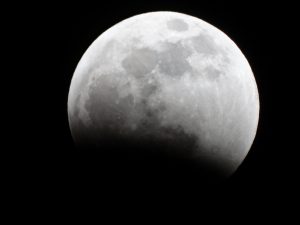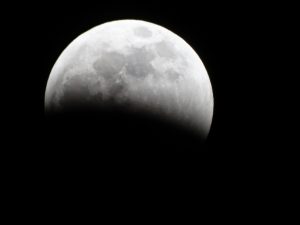
Last week while preparing myself for writing a research paper, I was reading about the invention of logarithms by John Napier of Merchiston (1550-1617). The story of logarithms is a fascinating story connecting mathematics, science, and our everyday life. You can find a lot of information about it online, including many excellent videos, books, and papers on teaching about logs and teachers’ and students’ understanding of the logarithmic function. This is an excellent opportunity for a creative teacher who wants to help students make meaningful connections between mathematics and science.
Reading the paper by Christof Weber (Weber, C. (2016). Making Logarithms Accessible – Operational and Structural Basic Models for Logarithms. Journal für Mathematik-Didaktik, 37(1), 69-98. doi:10.1007/s13138-016-0104-6) on the topic made me rethink it once again. First, it drew my attention to the choice of words – Logos+Arithmetic=logarithms… Somehow, the word ratio (one of the meanings of the word logos in Greek in a ratio) was hidden in the name of logs… And I am not going to discuss the word “arithmetic” here. Second, this paper made me appreciate not only what the invention of logarithms allowed people to do in the 17th century, but also how the logs were invented and that they were not invented as an inverse function of the exponent! They were invented as a connection between the arithmetic and geometric series… Think about it again… Historically, logs were invented BEFORE the exponential function… The connection between the logarithmic and the exponential functions was made later by another mathematical genius – Leonhard Euler (1707-1783). While this was a groundbreaking discovery, it hides the main reason for the invention and in some way, the power of the logarithmic scale. One of the main goals behind the invention of logarithms was to help astronomers with the calculations of trajectories of heavenly objects – like the trajectory of our Moon, Mars, Earth, etc. I am sure you know where I am going with that now. We will come back to that…
However, for me personally, the story of logarithms started more than three decades ago when my dad, who is an engineer, showed me how to use a strange device that could help me multiply and divide numbers very fast – a slide rule. In Russian, it is called a logarithmic rule, which in my view is a more appropriate name for this amazing invention, because slide rule uses logarithms to convert multiplication and division into addition and subtraction. A logarithmic rule was invented by William Oughtred using Napier’s logarithms in 1622! Yes, it is almost 400 years ago and the ripples of this amazing discovery keep changing our lives today. As you can find on this web site from the Centre of Computing History in the United Kingdom:
“After John Napier invented logarithms, and Edmund Gunter created the logarithmic scales (lines, or rules) upon which slide rules are based, it was Oughtred who first used two such scales sliding by one another to perform direct multiplication and division; and he is credited as the inventor of the slide rule in 1622. Oughtred also introduced the “×” symbol for multiplication as well as the abbreviations “sin” and “cos” for the sine and cosine functions.”
This is very exciting and it is not surprising that I have written about it in my earlier post here. Today, as a science teacher who teaches future teachers, I discuss with them how we can teach students about the magnitudes of earthquakes (Richter scale), pH scale, sound level (dB), radioactive decay, geological scales, and many-many other phenomena. The mathematics behind all these phenomena require a deep understanding and appreciation of the power of a logarithmic scale. I am fascinated by logarithms…
Yet, back then when I was in my late teens I didn’t fully appreciate Napier’s invention or even the slide rule. I realized that somehow Napier’s invention opened doors to “converting” the problem of multiplication to the problem of addition. But was it such a big deal after all? For example, among other things Napier also invented Napier’s bones – another cool pre-calculator invention:

And here astronomy comes to mind. As I was observing a breathtaking phenomenon of a lunar eclipse last night (this is the reason I place Tania’s photos of the lunar eclipse here), I was thinking how we take for granted our ability to predict the exact time and duration of these phenomena. We just take it for granted that we can know exactly when the eclipses are going to happen, as we have computers and other tools to help us with it.

But how was it done 400 years ago? Here logs come back into the picture. Another scientist who changed how we think about the world around us was Johannes Kepler (1571-1630). He was Napier’s contemporary and he was the person who used Napier’s logs and the logarithmic tables to make sense of Tycho Brahe’s (1546-1601) astronomical observations. Without the logs and the ability to simplify calculations, who knows if Kepler was able to derive the laws of planetary motion we teach in school today? And who knows by how many years these astronomical discoveries would have been delayed.
And it all comes back to learning. When you learn about mathematics and science as a collection of facts, without appreciating the context of these amazing discoveries, you lose sight of the achievements of people who lived before us… You also make these achievements abstract and unrelated to you. But if you start making these connections, you realize how these discoveries came to be and how they were the product of many amazing minds… To me these stories to come a full circle like the stories of O’Henry. Ideas, discoveries and our lives come together in fascinating and often unexpected circles, but when you start to see the connections things beging to make so much sense. So for me, the logs, the lunar eclipses and learning came together in such a circle last night.
For more information, read:
Berezovski, T. (2007). Exposing pre-service secondary mathematics teachers’ knowledge through new research designed methodology. (Ph.D.), Simon Fraser University, Burnaby, Canada.
Berezovski, T. (2004). An Inquiry into High School students’ understanding of Logarithms. (M.Sc.), Simon Fraser University, Burnaby, Canada.
Lunar Eclipses Vancouver, BC: https://www.timeanddate.com/eclipse/in/canada/vancouver
